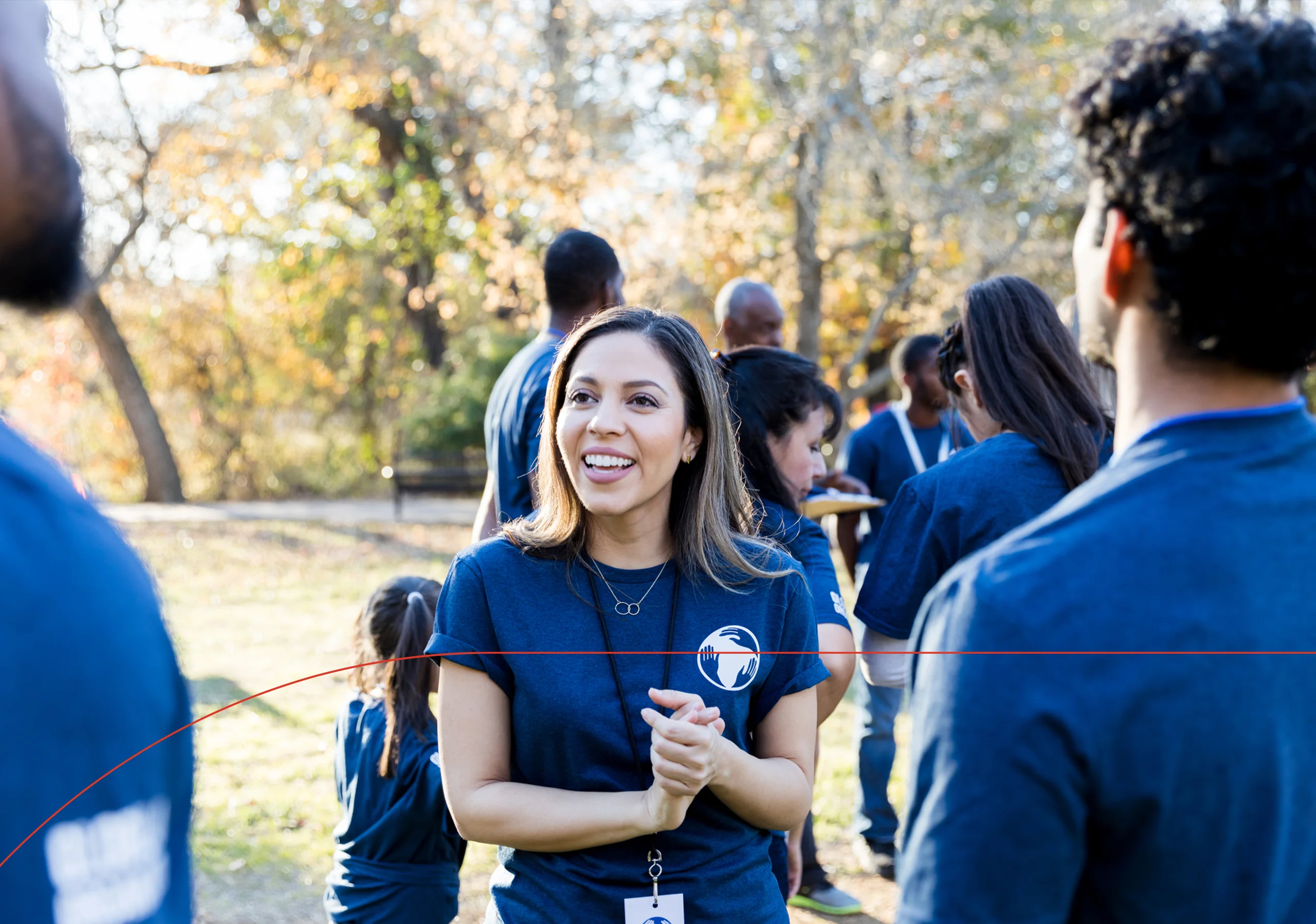Why Every Nonprofit Needs Directors and Officers Insurance (Before It’s Too Late)

You signed up to make a difference and support the mission, the community, the cause. You’re helping run a whole nonprofit. You’re showing up for early board meetings, overseeing big decisions, and trying to stretch every donated dollar.
But in between budgeting meetings, fundraising goals and planning the next big event, there’s a less glamorous reality to face—legal exposure you may not have expected. Allegations of mismanagement, breach of duty, even discrimination or misuse of funds—all of these can put a target on your back, whether or not you did anything wrong.
Great missions need great leaders—and great protection. That’s exactly why Directors and Officers insurance (D&O) exists. It’s not about expecting trouble—it’s about protecting the people who said “yes” to leadership, so they can focus on what really matters: making an impact.
Real Nonprofit Organization, Real Financial Consequences
The stories from actual nonprofit D&O claims reveal how quickly volunteer service can turn into personal financial disaster.
Consider what happened to members of a country club. They alleged negligence and breach of fiduciary duty against the club and certain board members stemming from the improper voting and election of its board of directors. Plaintiffs alleged that due to the failure to follow proper voting protocol, certain board members were elected who then mismanaged the club through self-dealing and other improper acts. The settlement resulted in new elections and defense exceeded $100K.
This case illustrates a critical point: In the legal system, being right doesn’t prevent being sued. The cost of defending your actions—even when you’ve done nothing wrong—can be financially ruinous for both individuals and organizations.
The Dangerous Myths That Leave Nonprofits Exposed
Many nonprofit leaders operate under misconceptions that leave them vulnerable. The most common and costly myth is that doing good work for a worthy cause provides legal protection. Unfortunately, courts don’t offer immunity based on good intentions. Nonprofit directors and officers face the same legal standards as corporate executives, often with higher expectations for transparency and accountability.
Another dangerous assumption is that small nonprofits won’t be targeted for lawsuits. Size offers no protection when it comes to governance responsibilities. Whether your organization has three employees or three hundred, board members face personal liability for their decisions. In fact, smaller nonprofits often face greater risks because they lack the formal processes and professional staff that larger organizations use to minimize exposure.
Many nonprofits also mistakenly believe their general liability insurance covers board decisions. While general liability protects against accidents and injuries, it doesn’t cover the management decisions, oversight failures, or alleged misconduct that trigger D&O claims, highlighting the need for appropriate liability coverage. These are entirely different types of risks requiring specialized coverage.sequences far beyond the balance sheet.
Today’s Nonprofit Risk Environment: More Complex Than Ever

The modern nonprofit landscape has created unprecedented risks for board members and executives. Cybersecurity incidents can trigger D&O claims when leadership is accused of inadequate data protection oversight. Social media amplifies reputation risks, turning donor complaints into public relations crises overnight.
Regulatory scrutiny has intensified across all aspects of nonprofit operations. Grant compliance requirements have become more stringent, with personal liability for leaders who fail to meet reporting obligations. International funding brings additional regulatory complexity, especially with anti-terrorism financing rules and foreign agent registration requirements.
ESG (Environmental, Social, and Governance) expectations now apply to nonprofits just as much as corporations. Boards face scrutiny over diversity, equity and inclusion initiatives, environmental sustainability practices, and governance transparency. Failure to meet these evolving standards can result in donor disputes, regulatory investigations and potential personal liability for leadership.
The rise of social media activism has also changed the landscape. A single controversial decision can go viral, leading to donor boycotts, regulatory scrutiny and potential litigation. Board members who thought they were making reasonable governance decisions can find themselves defending those choices in court or before regulatory agencies in such a suit.
Why Small Nonprofits Face the Biggest Risks
Contrary to popular belief, small nonprofits often face disproportionately high D&O risks. Board members in smaller organizations typically wear multiple hats, making financial decisions, overseeing programs and handling HR issues. This concentration of responsibilities increases the likelihood of alleged oversight failures.
Smaller nonprofits also tend to have less formal governance structures. Decisions that larger organizations would document through committee processes and board resolutions might be made informally in smaller groups. When problems arise, this informal approach can make it difficult to demonstrate that proper procedures were followed.
Resource constraints at small nonprofits can also create risks. Board members might feel pressured to cut corners on compliance, delay addressing personnel issues or make financial decisions without proper documentation. These shortcuts, while often necessary for organizational survival, can create significant personal liability exposure.
Additionally, small nonprofits often rely heavily on a few major donors or grants. When these key relationships go wrong, the financial impact can be severe, and disgruntled major donors have the resources to pursue legal action against leadership.
The Three Layers of Nonprofit D&O Protection

Comprehensive nonprofit D&O coverage typically includes three essential components.
Side A Coverage
This coverage protects individual directors and officers when the nonprofit can’t or won’t indemnify them—crucial protection for personal assets when the organization lacks resources for legal defense. This coverage is particularly important for nonprofits, which may not have the financial capacity to support board members facing legal challenges.
Side B Coverage
This coverage reimburses the nonprofit for indemnification payments made to directors and officers on a balance sheet. This helps preserve organizational resources by ensuring that legal defense costs and other costs don’t drain funds meant for mission-critical activities.
Side C Coverage
Also known as entity coverage, this protects the nonprofit organization itself when it’s named directly in lawsuits. This is increasingly important as plaintiffs often sue both the organization and individual leaders to maximize their chances of recovery.
Many nonprofit D&O policies also include Employment Practices Liability (EPLI) coverage, which addresses the unique employment challenges nonprofits face with volunteers, part-time staff and mission-driven employees who may have different expectations about workplace treatment.
Key Features for Nonprofit D&O Coverage
When evaluating D&O policies, nonprofit leaders should look for coverage specifically designed for their sector’s unique needs. The policy should include broad definitions of “insured persons” that encompass board members, officers, volunteers, committee members and even advisory board participants who might not have formal voting rights but still face liability exposure.
Defense costs should be covered outside the policy limits, preventing legal fees from reducing the funds available for settlements. This is particularly important for nonprofits, where prolonged legal battles can quickly exhaust available resources.
Critical Mistakes That Leave Nonprofit Leaders Vulnerable
Several common errors can leave nonprofit leaders dangerously exposed to personal liability. Relying on Directors and Officers coverage within a Business Owner’s Policy (BOP) or umbrella policy is often inadequate for serious management liability risks. These policies typically provide limited coverage amounts and may not include the specialized protections nonprofits need.
Failing to update D&O coverage when leadership changes is not necessarily a critical mistake—most policies automatically define insured persons as any past, present, or future directors and officers. This means there’s typically no need to update the policy or name individuals specifically when board members join or leave.
Many nonprofits also fail to review their coverage limits annually. As organizations grow and take on more complex activities, their risk exposure increases accordingly. Coverage limits that seemed adequate when the organization had a $500,000 budget may be woefully insufficient when operations reach $5 million annually.
Not understanding the policy’s retroactive date can create dangerous gaps in coverage. If you switch insurers, ensure your new policy covers acts that occurred before the policy inception date, or you could face exposure for ongoing situations that developed under previous leadership.
The Strategic Value Beyond Risk Management
D&O insurance provides benefits beyond just financial protection. Having robust insurance coverage demonstrates to donors, grantors and community partners that your organization operates with professional standards and sophisticated risk management. This can be crucial when competing for major grants or seeking large donations.
The coverage also helps attract and retain qualified board members. Experienced business leaders who might otherwise be reluctant to serve on nonprofit boards due to liability concerns are more willing to contribute their expertise when they know they’re protected. This can mean the difference between having seasoned professionals guide your organization versus settling for less qualified volunteers.
For nonprofit executives, D&O coverage provides peace of mind that allows them to focus on mission-critical activities rather than constantly worrying about personal liability. This can lead to more innovative programming and bolder strategic decisions that advance the organization’s goals.
Building the Right Protection for Your Mission
Every nonprofit’s D&O needs are different, depending on size, mission focus, geographic scope and specific risk factors. A local food bank faces different exposures than an international development organization, and their coverage should reflect those differences.
The key is working with insurance professionals who understand nonprofit operations and can design coverage that provides comprehensive protection within your budget constraints. This isn’t an area where generic, off-the-shelf solutions work well. Your coverage should be tailored to your organization’s specific activities, governance structure and risk profile.
Remember that D&O claims can arise years after the alleged wrongful acts occurred. The grant management decisions you’re making today could become the subject of litigation three years from now. The personnel policies you’re implementing now could trigger employment-related claims long after current leadership has moved on to other organizations.
Don’t let your commitment to doing good leave you vulnerable to financial devastation. Protect your mission, your organization and your personal assets with proper D&O coverage before you need it. Because when that first claim arrives, it’s already too late to get the protection you should have had all along.
